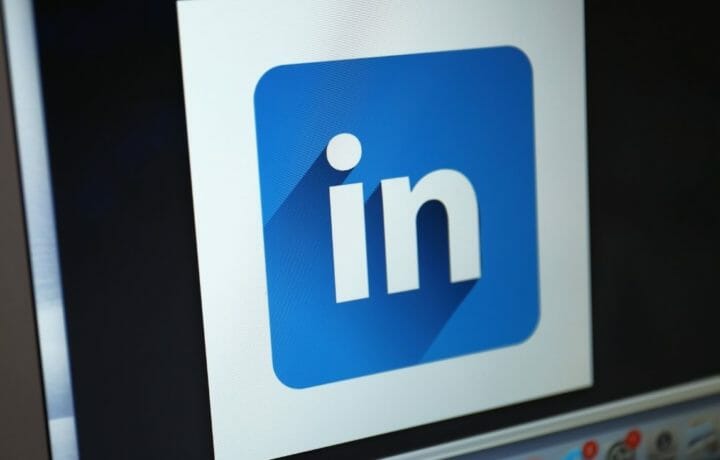In late July 2025, Australian Security Intelligence Organisation (ASIO) Director-General Mike Burgess put the cleared population of the Australian government on blast. Speaking at the Hawke Lecture, he flagged rampant self-disclosure on professional platforms, citing over 35,000 Australians publicly advertising sensitive access, including 2,500 with security clearances and 400 tied to AUKUS projects. The warning, while not new, underscores a persistent threat vector long spotlighted: LinkedIn as a tool in China’s human intelligence operations.
Burgess’s timing is precise, and the reminder stark: China “has an insatiable appetite for inside information.” The scale and precision of China’s targeting, outlined sharply in Burgess’s July remarks, make clear that this threat is not theoretical. It’s active and measured, and as anyone watching the counterespionage efforts of the DOJ, China’s modus operandi is highly effective. He shared the operational impact, the evolution of tradecraft, and the economic toll that occurs when personnel with clearances lose coherence and allow their focus on security to drift.
The irony is that China contemporaneously issued a similar warning to its citizens.
China’s candy store – LinkedIn
“LinkedIn is a candy store for Chinese intelligence.” James Olson, former CIA chief of counterintelligence, didn’t speculate, he testified. In the 2022 trial of convicted MSS officer Yanjun Xu, Olson described LinkedIn as a primary spotting mechanism: resumes, clearances identified, project affiliations, and endorsements all laid bare. Adversaries don’t have to chase secrets; they’re harvesting LinkedIn. The platform renders cleared professionals into structured visibility zones, exposing operational ties and access vectors.
Dickson Yeo harvester extraordinaire
The case of Dickson Yeo, now some five years old, is a prime example of the exploitation of LinkedIn by China. Yeo didn’t breach classified systems; he exploited LinkedIn’s precision targeting. Recruited by China’s Ministry of State Security, Yeo posed as a consultant, posted fake jobs, and harvested over 400 resumes from U.S. defense and policy professionals. Nearly all came with active security clearances. How did he know the individuals had security clearances? The individuals disclosed their security clearances to the world in their publicly facing profiles. His value to the MSS wasn’t based on a technical intrusion; this is how he developed proximity to the insiders of interest. This was built entirely on clues insiders provided; clearances, sensitive projects, and networks disclosed in full view.
Yeo described feeling addicted to LinkedIn, “as every day their algorithm would suggest to him new potential targets to contact.” This was a classic HUMINT (human intelligence) operation, taking the low-hanging fruit and exploiting it by design, built on the public disclosures of the professionals themselves.
FBI warns
The FBI’s training film Nevernight Connection dramatizes how China exploits LinkedIn to recruit assets, is based on the real-world case of Kevin Mallory, a former CIA officer who was approached online and ultimately betrayed his country. Today’s commercial espionage campaigns often begin with an innocuous recruiter message, not covert tradecraft. The FBI’s “Think Before You Link” initiative, along with industry protocols for social media vetting, underscores the shift: digital outreach is now the first stage of adversarial contact.
In 2021, UK counterintelligence reports have flagged over 10,000 LinkedIn approaches tied to foreign intelligence efforts, and MI5 has designated the platform a major national security threat.
China’s ironic CI warning
In July 2025, China’s Ministry of State Security (MSS) issued a pointed warning to public workers and newly appointed officials about the dangers of oversharing on social media. The advisory, released on July 24, emphasized that foreign intelligence agencies are actively exploiting online platforms to extract sensitive information through tactics like honey traps, blackmail, and AI-enabled data scraping.
The MSS cited several real incidents to illustrate the risks:
- A young cadre posted a photo of a confidential document to WeChat Moments, leading to a classified leak and disciplinary action.
- Another official casually discussed a secret project, which was overheard and later shared online by a family member.
- A scientific researcher uploaded sensitive data to an AI app to generate a report, inadvertently causing a breach.
The agency urged all personnel in sensitive roles to strictly separate work and personal life, avoid vanity-driven posts, and adhere to confidentiality protocols. The overarching message is “Everyone is responsible for counterespionage,” and even minor lapses can have severe consequences.
Are you prepared?
The statement that “LinkedIn is China’s playground” is not an exaggeration. This writer this very morning went to LinkedIn and searched the terms “Security Clearance” or “Top Secret” or “SCI,” and had over 100 pages of individuals served up by LinkedIn for perusal. Their entries allowed for crisp sorting by an adversary; some examples:
- Army Veteran with Top Secret/ SCI Clearance
- Navy Submarine Veteran with Top Secret SCI – Electronics Technician
- Top Secret – SCI with CI polygraph and Top Secret/ SCI with CI polygraph (DOD )
- Senior Cybersecurity Analyst, Top Secret/SCI Clearance
- Signal Intelligence Analyst Top Secret SCI Polygraph
It is no surprise that Dickson Yeo was addicted to LinkedIn, as the individuals self-identifying with security clearances were like a drug to him.
It falls to Facility Security Officers to keep this front-of-mind: if you’re publicly signaling access to sensitive work, you’re a viable mark. So the real question isn’t visibility; it’s preparedness. Are you equipped to recognize and rebuff their approach when it comes at you? Coherence starts at the profile. If your visibility is structured, so is your vulnerability.




